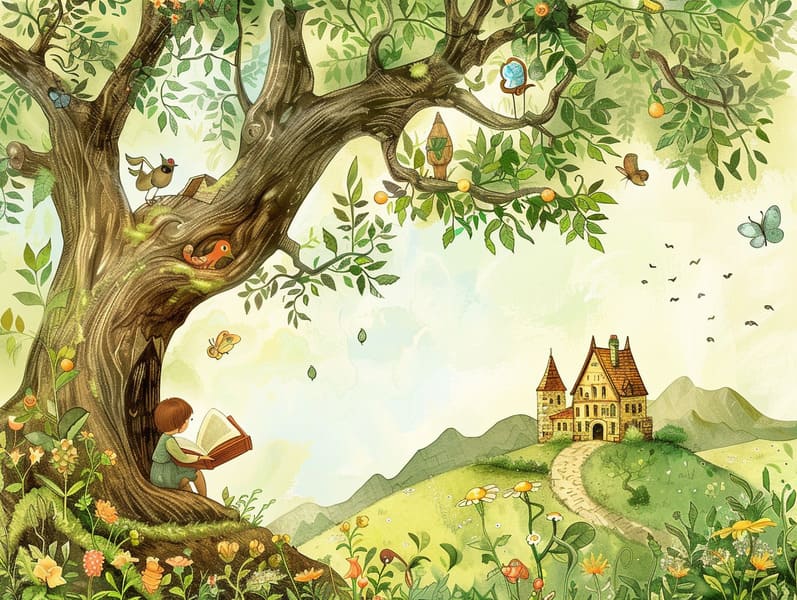The Beginning of Timeless Fairy Tales with Their Consistent Magic.
The Beginning of Timeless Fairy Tales with Their Consistent Magic.
Blog Article

Legendary fairy tales have timeless appeal. These narratives have been shared from one generation to the next far before they were ever put on paper. They emerged from a variety of traditions, including African traditions. They were initially conveyed among elders, often carrying themes and messages related to the societal norms and beliefs of the time.
Jacob and Wilhelm Grimm, Jacob and Wilhelm, were among the first to compile many of these beloved tales. Their volume, "Grimm's Fairy Stories," included tales like "Cinderella," "The Bread Crumb Trail," and "Little Snow White," which have since become classics in the world of timeless fairy tales. Similarly, H. C. Andersen's fantastical narratives, such as "The Mermaid," and "The Ugly Duckling," have gained the love worldwide, guaranteeing their place in the pantheon of famous fairy tales.
Despite being ancient, these stories remain as pertinent as ever, especially as nighttime stories for kids. These enchanting tales are now available in multiple formats, including colorful picture books, magical animations, and internet fairy tales.
Their lasting presence can be connected to several magical reasons:
Important Morals: Traditional fairy tales often offer important moral lessons. Fairy tales like "The Wolf and the Liar" teach the benefit of integrity, while "The Story of the Tortoise and the Hare" underline the merits of tenacity and unassuming nature. These narratives offer little ones clear distinctions between virtue and vice, developing their moral compass in a tender yet important way.
Sympathy and Perception: Traditional fairy tales frequently feature heroes facing challenges and problems, prompting readers to empathize with their struggles and back their triumphs. For instance, "Beauty's Beast" reveals the benefit of looking past the exterior to perceive the inner core of a being, building awareness and comprehension.
Cultural Appreciation: Many traditional fairy tales are interwoven with the cultural contexts from which they grew. Learning from these fairy tales can provide delightful insights into different societies, promoting a sense of global awareness and appreciation.
Inventiveness and Fantasy: The supernatural elements in fairy tales—supernatural elements—provoke children’s dreaming abilities. These fairy tales transport readers to supernatural realms, unleashing imaginative ideas and a sense of marvel that lasts a lifetime.
Classic fairy tales are not only magical but also enlightening. They work as whimsical tools in enhancing various mental and emotional abilities in young ones. When fairy tales are spoken out loud, they nurture linguistic abilities by teaching new terms and sophisticated sentence structures. This practice also develops auditory skills and focus, as the young listen intently, ready to see what happens next.
Furthermore, contemplating the themes and characters of old fairy tales can sharpen problem-solving abilities and intellectual skills. Young ones learn to see patterns, expect results, and grasp cause and effect. These explorations also assist young ones articulate their thoughts and feelings, enhancing their emotional intelligence.
In today’s digital era, the availability of online fairy tales has made these fairy tales more available than ever. Online platforms and web apps offer large libraries of Grimm's fairy tales that can be browsed or listened to anytime, anywhere. Fairy tales voiced are particularly well-received, sharing an interactive method for kids to enjoy these get more info charming tales. Read-aloud books and read-to-me videos lead characters and settings to life, often paired with entrancing audio effects and background music that intensify the narrative adventure.
The timeless appeal of ancient fairy tales lies in their ability to adapt to new eras while preserving their central messages. Contemporary takes of these fairy tales often incorporate more multicultural figures and modern settings, making them understandable to today’s audience. However, the underlying themes of guts, goodness, and equity remain unchanged, continuing to touch kids of all ages.
Classic fairy tales also offer a sense of protection and familiarity. They showcase a methodical narrative with a evident beginning, middle, and end, often coming to a close with the resolution of conflicts and the triumph of honesty over deceit. This consistency can be calming for children, affording a sense of solidity in an constantly changing world.
Old fairy tales continue to fascinate and edify new generations, maintaining their magic and significance in modern society. As kids' bedtime tales, they bring a perfect blend of captivation and insight, aiding moral values, empathy, and creativity. The proliferation of web-based fairy tales and the prevalence of fairy tales spoken ensure that these old stories remain within reach to new generations.
By keeping and sharing these narratives, we continue to glorify the rich tapestry of mythology and cultural heritage. Whether you are perusing a gorgeously illustrated book, browsing a digital library, or listening to an spoken story, the appeal of famous fairy tales is always within reach. These fairy tales convey of the immortal essence of fairy tales and its ability to link us across eras and regions.
Regardless if you are exploring a gorgeously illustrated book, accessing a internet library, or listening to an audio story, the radiance of Grimm's fairy tales is always within reach.
These fairy tales emphasize of the persistent strength of storytelling and its ability to link us across eras and regions, establishing a link that enchants and educates alike.